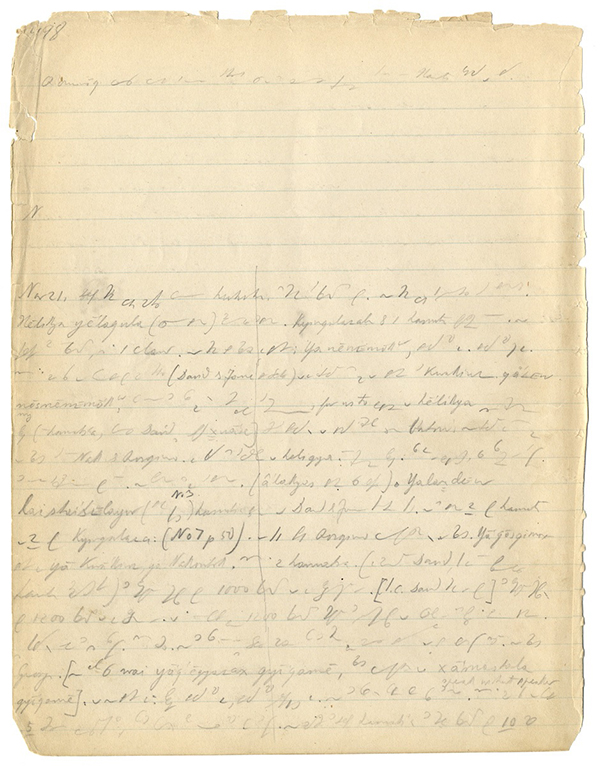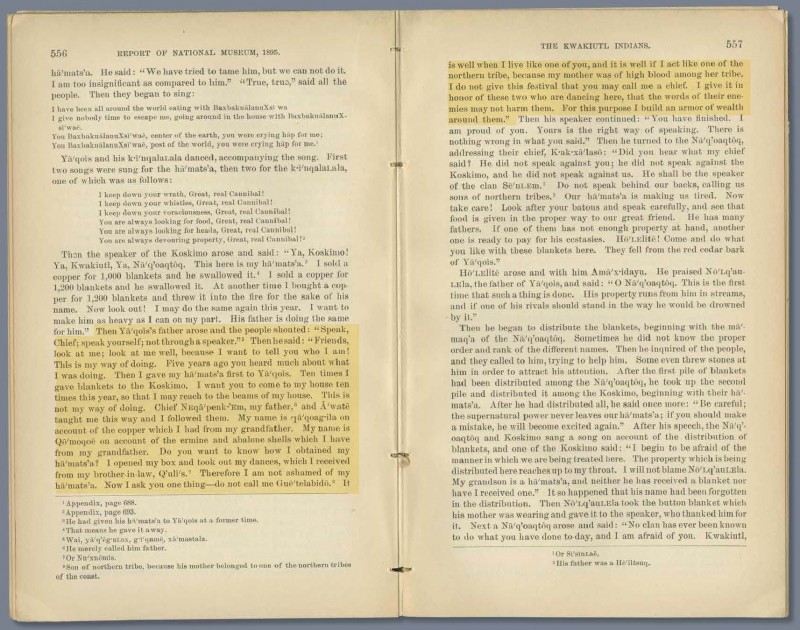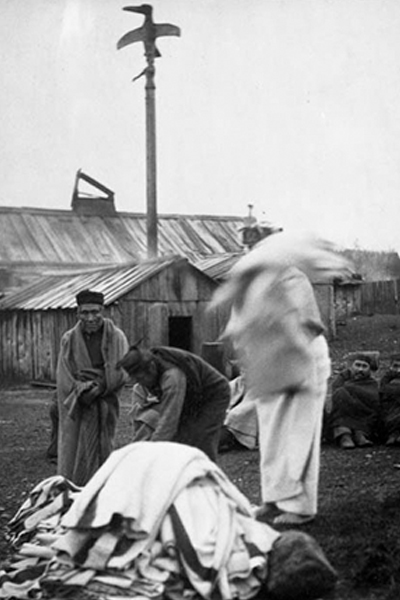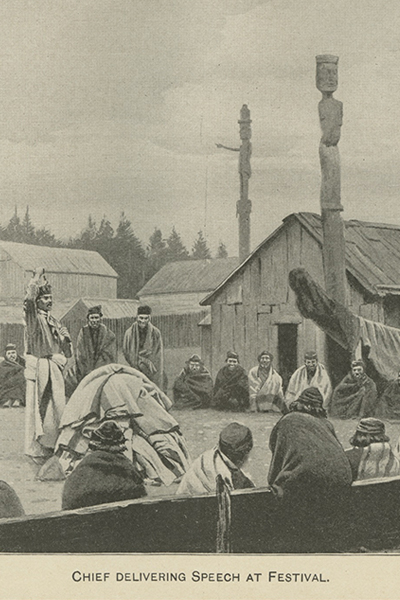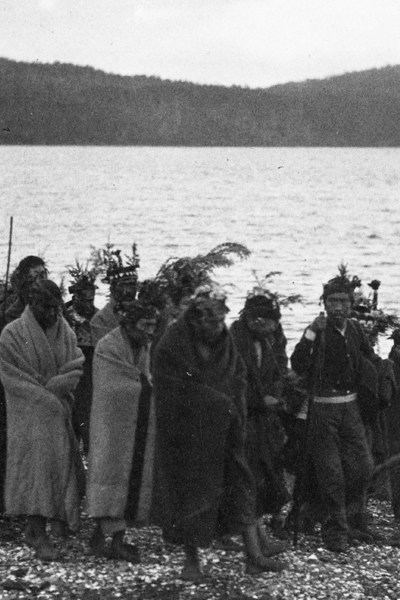CHAPTER V: 1894 FORT RUPERT
From Boas’s Fieldnotes to Publication
One page from Boas’s 1894 field notebook. Franz Boas Papers, American Philosophical Society Library.
Transcribed and translated by Rainer Hatoum:
Then George spoke… And then he said: Friends look at me, look well at me. Because I will also let you know who I am. This is my way. {In the past} 5 years you heard, as I know{,} a lot about me {and} what I do. When I made hamatsa at first{,} I gave blankets away, 10 times to the Qosqimo. And I want you to come back to my house 10 times this year, so that I reach the two beams of my roof. It is not my way. Nᴇqā´p’ᴇnkyᴇm, the chief, my father {figurative} and ´watē have taught me everything about this way and I have followed them ever since. My name is ʟā´qoagyila owing to the copper there {which} came from my grandfather. Ermine and abalone shells also came from him. And therefore, my name is Q!ō´moquē. If you want to know how I got my hamatsa, I got {my} hamatsa from my {wife, who was the} sister {of} Q’ulî´s (= Omh̠it). And therefore I am not ashamed of my hamatsa. Don’t call me Guē´tᴇlabīdō {“little Northerner”}, don’t call me Mā´maʟnapēdō {“little White man”}. Because when I dress myself as an Indian, then I look good, because my mother was born {of} high {rank} in the north. And I look good when I dress like a white man because my father was known to everyone. Then he said: I am not doing this so you call me a chief. I am doing it for these 2 here who are dancing {his son David, the Hamat̕sa, and his daughter Jane, the Ka̱nk̠a̠latła̱la}, so that the words of their enemies may bounce off from them. Therefore I am putting this shield of wealth around them.
Pages 556–57 from Boas’s 1897 book. Highlighted passage corresponds to his fieldnotes, above.
As Franz Boas sat through complex ceremonies in 1894, he jotted fieldnotes in an idiosyncratic shorthand. The following morning, George Hunt would sit with him and clarify what Boas had experienced; later, Hunt drafted whole passages of related narrative. This combined effort resulted in the lengthy 1897 book chapter that purports to be Boas’s own eyewitness account of the Winter Ceremonial—one of anthropology’s earliest such documents based on participant observation.
Boas neglected to acknowledge Hunt’s role in co-authoring this published passage. In addition, Boas obscured Hunt’s participation in the ceremony itself—his son David’s Hamat̕sa initiation—by only referring to David Hunt’s Kwak̓wala name, “Ya’qois” (’Yagwis). Boas may have had two motives for concealing the Hunts’ identities: protecting them against prosecution under the potlatch ban and protecting the scientific “objectivity” of Boas’s ethnographic text.

